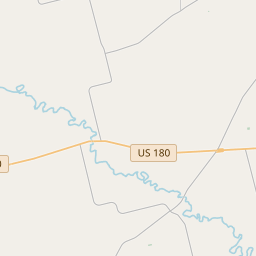Organization of Fisher County
Historical marker location:






When the Texas Legislature created Fisher County in 1876, there were no permanent settlements in the area. As a result, the county was linked with Shackelford and Nolan Counties for judicial purposes. By 1885, enough settlers had moved into the area to warrant official organization of the county. Part of this organization was the selection of a county seat, a matter that caused much debate. In 1885 two townsites were laid out and proposed as county seats. Businessman E. D. Strang, a native of Wisconsin, organized and promoted the town of Fisher, while two former Mississippi plantation owners, D. C. and M. L. Roby, inherited land on which they laid out the townsite of Roby. Fierce competition began between the adherents of each site. When the proponents of Roby felt they had enough votes, they presented a petition for election to the Nolan County Commissioners Court. Although adherents of Fisher contested the petition as faulty, they could not prove their accusations as correct. An election held in April 1886 determined Roby to be the county seat. As newly elected officials attended to business and construction began on a courthouse, tempers settled, and the organization of Fisher County was complete. (1983)
As one of the most visible programs of the Texas Historical Commission (THC), historical markers commemorate diverse topics in Texas history, including: the history and architecture of houses, commercial and public buildings, religious congregations, and military sites; events that changed the course of local and state history; and individuals who have made lasting contributions to the state, community organizations, and businesses.
Texas has been a major oil-producing state for over a century. The first big oil discovery in Texas was the Spindletop field near Beaumont in 1901, which set off a massive oil boom that transformed the state's economy and made Texas one of the wealthiest states in the country.
The early settlers of Fisher County were primarily ranchers and farmers who were attracted to the fertile land and abundance of water sources, particularly the Colorado River. These pioneers faced many challenges, including severe weather conditions and conflicts with Native American tribes in the area. However, they persevered and gradually developed thriving communities, mainly centered around farming and ranching.
The arrival of the railroad in the late 1800s greatly enhanced the county's economic development. The railroad allowed for the transport of goods and improved access to markets, leading to the growth of towns such as Roby and Rotan. With the expansion of the rail network, Fisher County became an important transportation hub in the region.
In the 20th century, Fisher County faced some setbacks, including the effects of the Great Depression and a decline in population due to the mechanization of farming. However, the discovery of oil and gas reserves in the area in the 1940s provided a boost to the local economy. Today, Fisher County continues to rely on agriculture, oil and gas, and small businesses as its main economic drivers, while also preserving its historical heritage through museums and cultural events.
Fisher County Timeline
This timeline provides a glimpse into the major events and milestones that have shaped the history of Fisher County, Texas.
- 1870: Fisher County was established on February 1, 1876, and named after Samuel Rhoads Fisher, a signer of the Texas Declaration of Independence.
- 1880s: The first settlement in the area was established near the Clear Fork of the Brazos River.
- 1890s: The county experienced a population boom with the arrival of the Texas Central Railroad.
- 1911: The town of Roby was designated as the county seat of Fisher County.
- 1930s: Fisher County, like the rest of the country, was greatly affected by the Great Depression.
- 1940s: The discovery of oil and gas in the county led to economic growth and increased population.
- 1970s: The county faced economic challenges due to declining oil prices.
- 2000s: Fisher County continued to be primarily agricultural, with farming and ranching as the main economic activities.